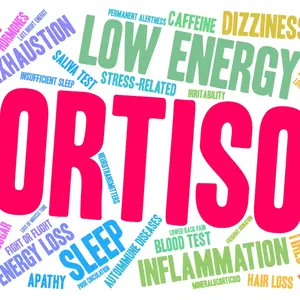

Chronic Conditions and Diseases

Chronic Conditions and Diseases
EMFs and Cardiovascular Risk
This 2023 study, published in Physiological Research, explored whether everyday electromagnetic fields (EMFs) from wireless technologies such as Wi-Fi and 4G, emitted from cell phone towers, might influence heart health. Electromagnetic fields (EMFs) are invisible areas of energy produced by electrically charged objects, such as cell phones, Wi-Fi routers, power lines, and household appliances.
The researchers focused on the autonomic nervous system, which acts like a control center balancing the body’s rest and digest (parasympathetic nervous system) and fight or flight (sympathetic nervous system) responses. A well-functioning balance between these two branches is essential for maintaining a healthy heart rhythm and protecting against cardiovascular disease.
To investigate, the team recruited thirty young and healthy volunteers. Each person was exposed for five minutes to either a Wi-Fi signal operating at 2400 megahertz or a 4G (cell phone) signal at 2600 megahertz, with the source placed close to the chest. During these short exposures, the researchers recorded heart rate variability (HRV), a measure of how much the time between individual heartbeats fluctuates. This measure is considered an important marker of how well the autonomic nervous system is regulating the heart. A high HRV score is considered positive, because the heart is in a dynamic dance of balance between the sympathetic and parasympathetic systems.
The results showed that Wi-Fi exposure shifted the balance toward greater sympathetic activity, which is the part of the nervous system responsible for the stress response. Exposure to the 4G signal reduced parasympathetic activity, which normally promotes relaxation and recovery in the body. Although the overall heartbeat intervals did not change significantly, the underlying pattern of autonomic control did. Both types of exposure therefore pointed to subtle disturbances in the body’s normal cardiac regulation that tipped the balance away from relaxation and towards stress.
These changes are meaningful because reduced variability in heart rhythm or an overactive stress response has been linked in many studies to higher risks of long-term cardiovascular problems such as hypertension and arrhythmias. Even though the exposures in this study were brief, they seemed to alter heart regulation in directions that are generally considered less favorable for long-term health.
At the same time, the authors caution against overinterpretation. The study was conducted on a small group of participants, the exposures lasted only a few minutes, and real-life conditions involve much longer and more complex patterns of electromagnetic signals from many devices. The findings therefore do not prove that Wi-Fi or 4G cause lasting harm but do suggest that they can have measurable effects on the body’s cardiovascular control, even in healthy young adults.
The authors conclude that short-term exposure to high-frequency electromagnetic fields may disrupt the normal balance of heart regulation, shifting it either toward excessive stress activation or reduced recovery capacity. Such disturbances, if repeated or prolonged, could potentially contribute to cardiovascular complications later in life. Larger and longer studies will be needed to clarify the significance of these effects.
REFERENCES
Parizek D, Visnovcova N, Hamza Sladicekova K, et al. Electromagnetic fields – do they pose a cardiovascular risk? Physiol Res. 2023;72(2):199-208. doi:10.33549/physiolres.934938


 By
By





